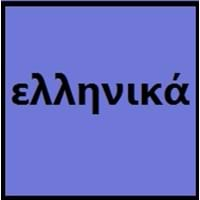Greek vs Filipino
- Greek is the longest documented language of all the Indo-European Langauges.
- The official language of education in the Roman Empire was Greek.
- "Filipino" was officially declared as national language by the constitution in 1987.
- "Filipino" is the official name of Tagalog, or synonym of it.
Greek and Filipino Language History
Comparison of Greek vs Filipino language history gives us differences between origin of Greek and Filipino language. History of Greek language states that this language originated in 1500 BC whereas history of Filipino language states that this language originated in 16th Century. Family of the language also forms a part of history of that language. More on language families of these languages can be found out on Greek and Filipino Language History.
Greek and Filipino Greetings
People around the world use different languages to interact with each other. Even if we cannot communicate fluently in any language, it will always be beneficial to know about some of the common greetings or phrases from that language. This is where Greek and Filipino greetings helps you to understand basic phrases in Greek and Filipino language. Greek word for "Hello" is γεια σας (geia sas) or Filipino word for "Thank You" is Salamat. Find more of such common Greek Greetings and Filipino Greetings. These greetings will help you to be more confident when conversing with natives that speak these languages.
Greek vs Filipino Difficulty
The Greek vs Filipino difficulty level basically depends on the number of Greek Alphabets and Filipino Alphabets. Also the number of vowels and consonants in the language plays an important role in deciding the difficulty level of that language. The important points to be considered when we compare Greek and Filipino are the origin, speaking countries, language family, different greetings, speaking population of these languages. Want to know in Greek and Filipino, which language is harder to learn? Time required to learn Greek is 44 weeks while to learn Filipino time required is 44 weeks.





